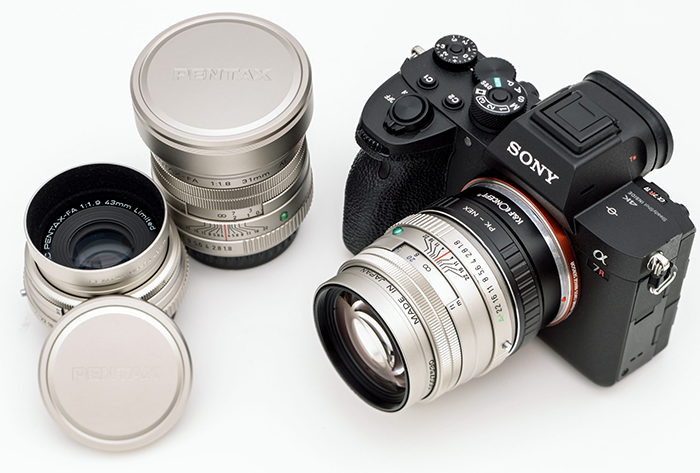DpreviewTV: Best Full Frame Landscape Camera – Sony a7R IV vs. Nikon Z7 II
DpreviewTV:
We compare two of the best full frame landscape cameras available today – the Sony a7R IV and the Nikon Z7 II. Find out which one is best for you!
DpreviewTV:
We compare two of the best full frame landscape cameras available today – the Sony a7R IV and the Nikon Z7 II. Find out which one is best for you!

Mapcamera posted a set of image samples shot with the nice Pentax Limited lens series. Check them out on their website!
We have a ton of 50mm E-mount lenses but I guess very few of you would ever consider this one from Voigtlander. From the pure specs point of view it’s nothing exciting. But this is a “Lnathar” lens which means it’s meant to be a lens with superb resolution. Lenstip tested the new Voigtlander 50mm FE lens and concluded:
The Voigtlander Apo Lanthar 35 mm f/2 Aspherical, tested by us not so long ago, was an outstanding lens. At that time it was difficult to imagine a better performance. Its 50 mm brother, though, showed clearly that it is completely possible to fare even better – it managed to achieve an excellent or outstanding result practically in every testing category, apart from vignetting.
Even the Voigtlander’s Apo Lanthar 2/50 high price tag, amounting to about $1050, is not able to change our favorable assessment of this lens; in this case we feel such a high quality is worth paying for. When a lens comes with a long list of assets and is practically devoid of flaws we always grant it our ‘Editors’ Choice’ badge. We feel the Voigtlander fully deserves it.
Get the lens at BHphoto.
Zeiss ZX1 camera at BHphoto, Adorama and Fotokoch. There are also a ton of ZX1 accessories (listed at BH).
Dpreview published the full Zeiss ZX1 review and concluded:
The ZX1, as the result of such a venture, was always unlikely to be as polished as the tried-and-true designs we’re accustomed to seeing (which are often finely honed from decades of ergonomic design experience and user feedback). But the ZX1 succeeds in making an impression. It’s striking. So while I can’t wholeheartedly recommend that the ZX1 is the fixed-lens compact camera that everyone should rush out and buy, it will, for the right person, spark joy and reward them with excellent image quality and a singular user experience. Exclusivity, after all, carries a different price tag for everyone.
Sony 50mm f/1.2 GM at BHphoto. Amazon. Adorama. FocusCamera. Fotokoch Germany. Calumet Germany, Foto Erhardt. ParkCameras UK. Jessops.
This is Manny Ortiz take on the 50mm GM lens:
If 65mm is your kind of focal length than checkout this rare review of the two Voigtlander and Sigma lenses made by Lensvid:
I bet no SAR reader here owns this lens! But if you wanna know what you can do with it jump over to this review published by Allan Weitz on Explora.